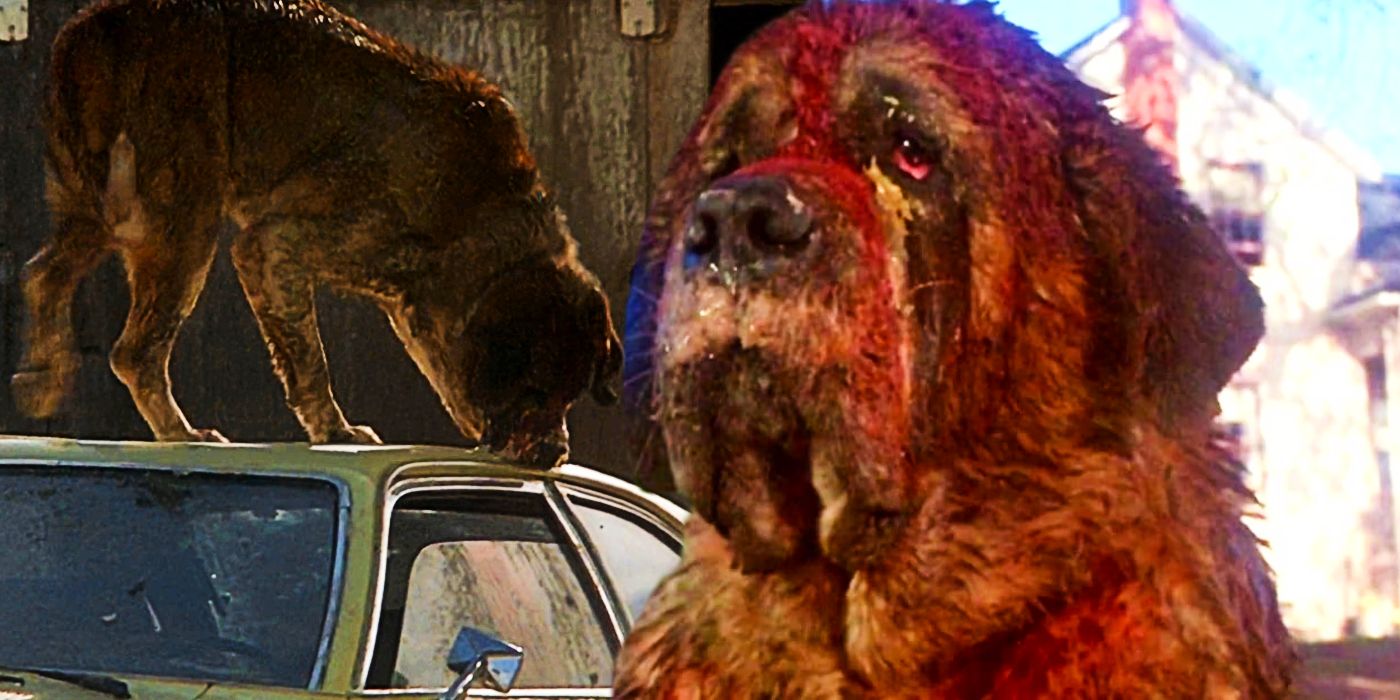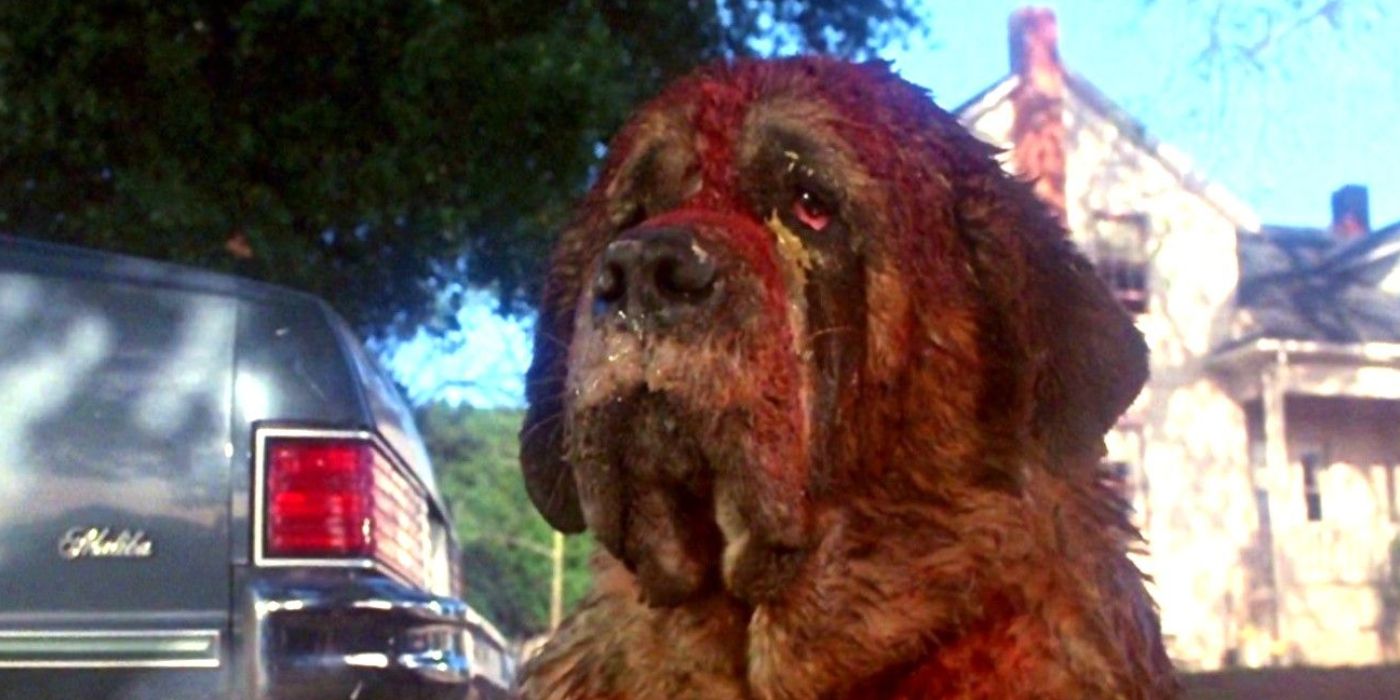Stephen King’s Cujo Sequel Finally Gave Me Closure After 43 Years
Summary
- Stephen King’s “Rattlesnakes” serves as a poignant Cujo sequel, focusing on Vic Trenton and the impact of Tad’s death on his marriage.
- The story is set in the present day and explores the aftermath of Cujo’s tragic events, highlighting King’s ability to delve into the intricacies of long marriages.
- “Rattlesnakes” also connects to King’s novel Duma Key, as it takes place on Rattlesnake Key, the neighboring island of the destroyed Duma Key.
This article contains spoilers for Cujo and “Rattlesnakes” from Stephen King’s You Like It Darker.
After more than three decades after I first read it, and four decades after he first wrote it, Stephen King finally gave me closure with his Cujo sequel. A new Stephen King novel is always a fun event for me; as an avid reader of the King of Horror since I was a preteen, I still have a love affair with his work. One of his earliest works I read, at the ripe old age of 12, was Cujo. The story of the rabid Saint Bernard, the heroic and desperate Donna Trenton, and the doomed Tad always stuck with me. Something about the horror of a mundane situation that turns into a nightmare got me good.
Even so, Stephen King’s Cujo and the movie always felt like a one-and-done story. It’s hard to continue a story when the antagonist is dead and so is a kid. That’s the real tragedy of Cujo, after all. There’s no big bad monster that can arise from the dead (this isn’t Pet Sematary, after all) to terrorize a new family. Leave it to Stephen King to figure out how to tell a Cujo sequel that’s poignant and thought-provoking. It doesn’t have the visceral horror of Cujo, but revolves around a quieter, more stubborn sort of nightmare that doesn’t go away.

Related
How Stephen King Raised Me (Sorry Mom & Dad)
I started reading Stephen King when I was only 10 years old, and being exposed to the King of Horror’s writing shaped me in significant ways.
Stephen King’s New Book Contains A Sequel To Cujo (But Not How You Think)
It’s Not A Direct Sequel, But It Is A Smarter One
Stephen King’s latest book, You Like It Darker, isn’t a novel, but instead a collection of short stories. King’s short stories are infamous among his readers for sometimes being even more horrifying than his full-length novels. They have a way of capturing a perfect moment of horror and crystalizing it for us readers, searing specific images in our minds. I, for one, can attest to the way “The Jaunt” scarred me for life; the final scene is burned into my brain for all eternity. But I digress.
One of those short stories is “Rattlesnakes,” King’s Cujo sequel. “Rattlesnakes” is actually quite long at almost 90 pages, so you know Stephen King was cooking an idea. That idea, I was pleased to learn, was a sequel to Cujo. It’s not a straightforward sequel – while there is certainly horror, Cujo does not rise from the dead à la Pet Sematary to terrorize a new family. Nor is there a new rabid, malevolent dog. It doesn’t even pick up shortly after the events of Cujo; the new story is set in the (relatively) present day. Still, I thought “Rattlesnakes” was an even smarter take on a Cujo sequel than I expected. I was glad to learn Stephen King still has the power to surprise me.
I thought “Rattlesnakes” was an even smarter take on a
Cujo
sequel than I expected. I was glad to learn Stephen King still has the power to surprise me.
How Stephen King’s “Rattlesnakes” Connects To The 1981 Novel
It Follows Someone Who Wasn’t The Focus Of The Original Cujo
The original novel focuses on Donna Trenton and son Tad. In Cujo, the rabid Saint Bernard traps Donna Trenton and Tad in their broken-down car in the middle of nowhere. Their story in Cujo has a tragic ending – you already know it. So it’s not Donna’s or Cujo’s stories Stephen King is interested in telling; he’s already told it. “Rattlesnakes” instead focuses on Vic Trenton and all the ways Tad’s death impacted his and Donna’s marriage and how it continues to impact Vic, now an older man, forty years later. Cujo is long dead and so is his son, but both haunt him.

Related
Should Cujo Have Kept Stephen King’s Original Ending?
Although Cujo’s 1983 adaptation dropped the book’s bleak original ending, the Stephen King adaptation may have been right to jettison the cruel twist.
Interestingly, though, Vic holds no animosity for Cujo. A retired ad man, Vic’s character is a pragmatist and knows that the dog couldn’t help its actions being so far gone to rabies. The death of Tad in Cujo ultimately forced Vic and Donna’s marriage to fall apart after the events of the novel. Donna, too, is now dead, having recently passed from cancer. Even so, his respect for Donna squaring off against the 150-lb. Saint Bernard with only a baseball bat is something Vic keeps returning to in his memories. The story also touches upon Vic’s ad agency, as well as Donna’s affair with local man Steve Kemp and the damage he caused, even before Tad’s death.
I thought it was neat how “Rattlesnakes” also serves as a minor sequel to Stephen King’s 2008 novel, Duma Key. In the ending of that novel, the small, haunted island of Duma Key is destroyed in a tropical storm conjured up by the protagonist, Edgar Freemantle. The events of “Rattlesnakes” take place on Rattlesnake Key, the former Duma Key’s neighboring island. Throughout “Rattlesnakes,” Vic often looks across the shallow sea to the remnants of Duma Key, which is merely some greenery floating above the surface now. It would seem Perse, the evil deity, of Duma Key, is still contained, even if Vic’s sad memories aren’t.
“Rattlesnakes” Gave Me Closure After Cujo’s Tragic Ending
It Plays To One Of Stephen King’s Greatest Strengths As A Writer
The novel is a tragedy; in the sweltering heat of the car, trapped by the murderous dog, young Tad ends up succumbing to heat exhaustion and dies. I remember being horrified when I read Cujo as a kid: Stephen King wasn’t afraid to kill off kids like me, something still more verboten than not in horror. It was hard to grapple with as a 12-year-old how there was no supernatural creature, just a poor dog with an illness and a poor kid in the wrong place at the wrong time; that kind of real-life horror was new to me.
Much like Vic, I guess I also needed some closure after Cujo. Now, more than 30 years after I first read it, I can appreciate Vic’s haunted memories, the way his marriage dissolved in their shared but separate grief. I have no kids, but I have had a relationship that has fallen apart that, with the benefit of hindsight and time, I might have handled differently. That’s what’s so brilliant about “Rattlesnakes.”
In horror stories, we generally stop wondering what happens after the monster is vanquished, especially in books; rarely do we think about how the events impact the people who lived through them and those who love them.
In horror stories, we generally stop wondering what happens after the monster is vanquished, especially in books; rarely do we think about how the events impact the people who lived through them and those who love them. But that’s always been one of King’s strengths, and not just in the Cujo sequel. Stephen King has always been great about exploring the intimate intricacies of long marriages, with the nuance and detail that only comes from having been through those hills and valleys himself. In “Rattlesnakes,” he uses that to full effect, and the result is something that surprised me, but in the best way possible.







